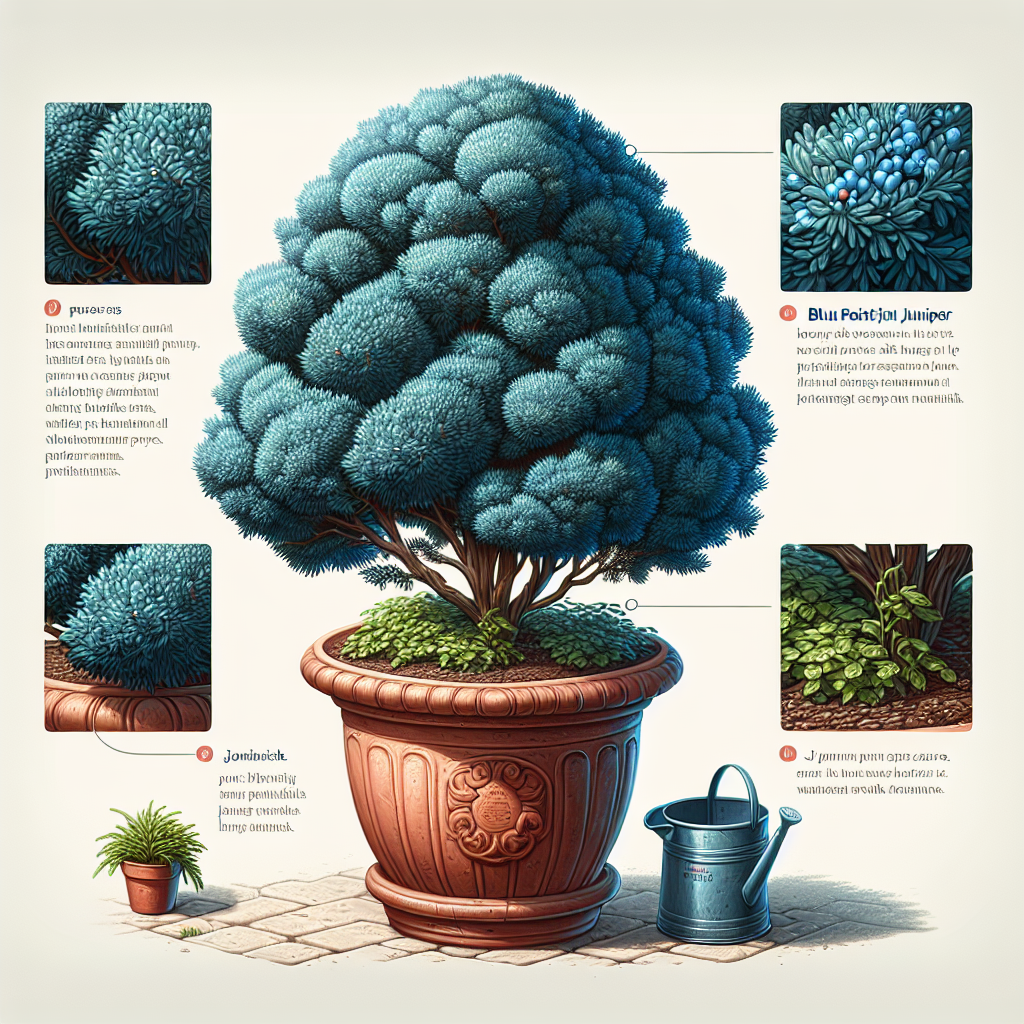Blue Point Junipers are a popular choice for landscaping and gardening due to their striking blue-green foliage and versatility. These evergreen trees can thrive in a variety of conditions, including being grown in pots or containers. If you have a Blue Point Juniper in a pot, it’s important to properly care for it to ensure its health and longevity. In this article, we will discuss the essential care tips for Blue Point Junipers in pots.
1. Choosing the right pot: When selecting a pot for your Blue Point Juniper, it’s important to choose one that is large enough to accommodate the tree’s root system. The pot should have drainage holes to prevent water from accumulating at the bottom, which can lead to root rot. Additionally, choose a pot made of a breathable material such as terracotta or ceramic to allow air circulation to the roots.
2. Soil requirements: Blue Point Junipers prefer well-draining soil with a slightly acidic pH level (between 6.0 and 7.0). You can use a pre-mixed cactus or succulent potting mix or create your own by combining equal parts of peat moss, perlite, and coarse sand. Avoid using regular garden soil as it tends to retain too much moisture.
3. Watering: Proper watering is crucial for the health of your Blue Point Juniper in a pot. While these trees are drought-tolerant once established, they still require regular watering, especially during hot summer months. Water your juniper when the top inch of soil is dry to the touch, using a watering can or hose until water runs out of the drainage holes at the bottom of the pot.
4. Light requirements: Blue Point Junipers thrive in full sun but can also tolerate partial shade. Place your potted tree in a sunny spot where it can receive at least 6-8 hours of direct sunlight per day. Rotate the pot occasionally to ensure even sun exposure on all sides of the tree.
5. Fertilizing: Feed your Blue Point Juniper with a balanced fertilizer specifically formulated for evergreen trees during the growing season (spring through fall). Be sure to follow the manufacturer’s instructions regarding dosage and frequency of application. Avoid fertilizing during winter months when the tree is dormant.
6. Pruning: Regular pruning is essential for maintaining the shape and size of your Blue Point Juniper in a pot. Use sharp pruning shears to trim back overgrown or dead branches, shaping the tree as desired while avoiding cutting into green foliage if possible.
7. Repotting: As your Blue Point Juniper grows, it may outgrow its current pot and require repotting into a larger container every 2-3 years or when you notice roots circling around the bottom of the pot or emerging from drainage holes. Choose a slightly larger pot with fresh well-draining soil when repotting.
8 Pest control: Keep an eye out for common pests such as spider mites, scale insects, and aphids that may infest your Blue Point Juniper in a pot. These pests can be treated with insecticidal soap or neem oil spray applied according to label instructions.
In conclusion caring for Blue Point Junipers in pots requires attention to detail but following these essential care tips will help ensure healthy growth and thriving trees that will beautify your garden or landscape space for years to come.













